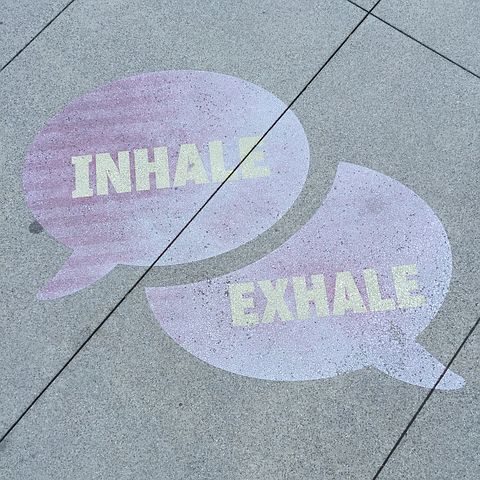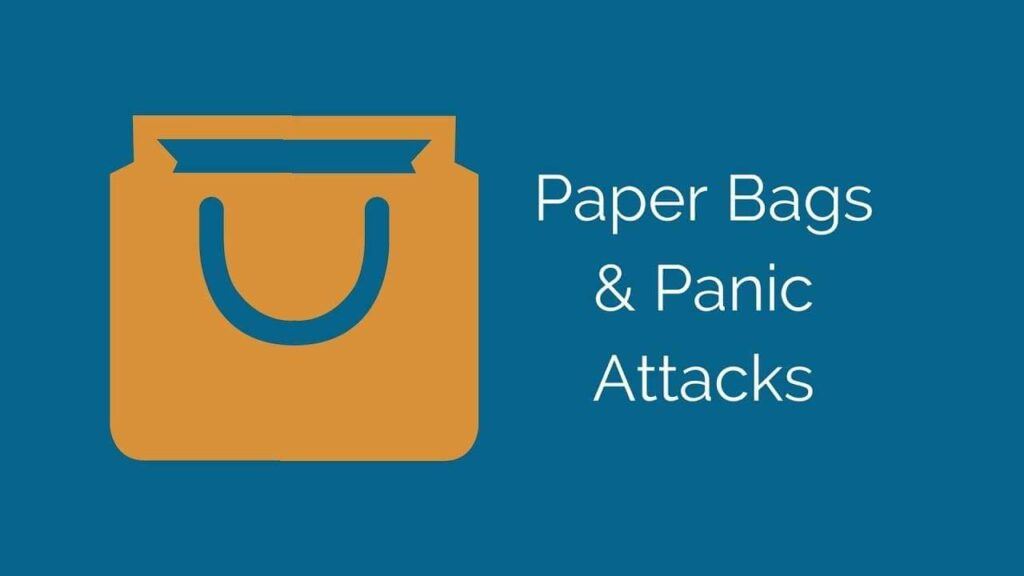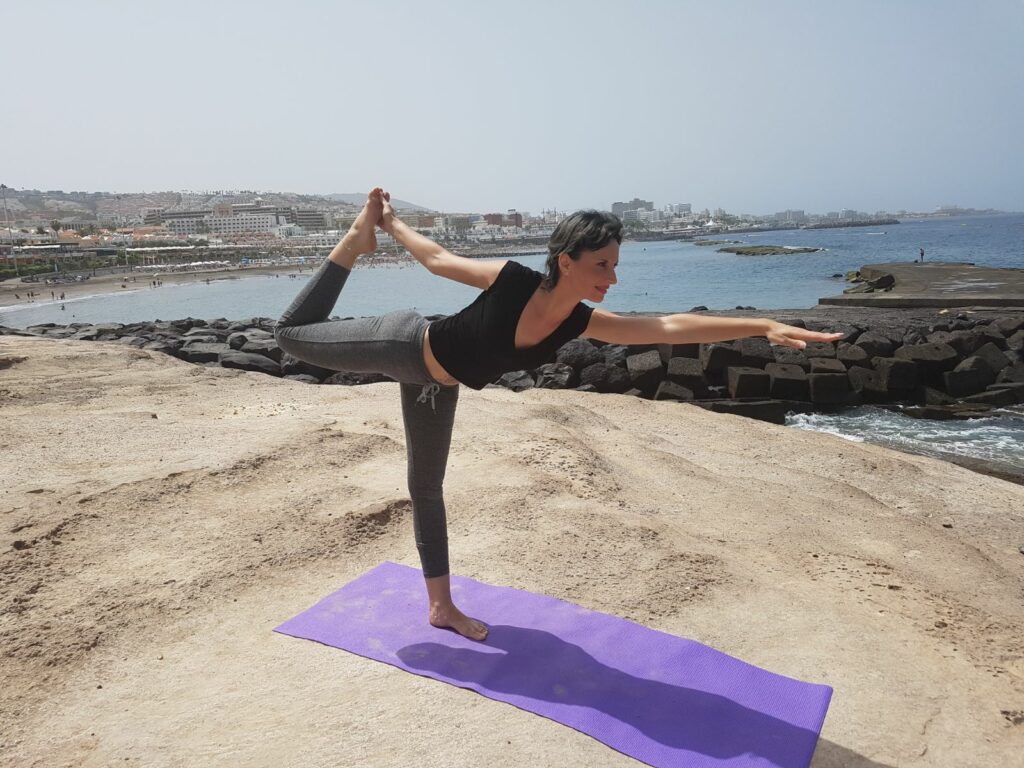In the throes of panic attacks, a simple yet powerful tool lies at your disposal – breathing techniques. Grounded in scientific principles, these techniques have been a cornerstone in managing and overcoming the often symptoms of panic attacks.
- THE SUDDEN GRIP OF PANIC ATTACKS
- WHAT ARE THE PANIC ATTACKS
- HOW PANIC ATTACKS MANIFEST
- FINDING CALM AND BALANCE THROUGH TAILORED BREATHING TECHNIQUES
- SLOW CONTROL BREATHING
- 6 BREATHING TECHNIQUES FOR PANIC ATTACKS
- FINAL THOUGHTS…

THE SUDDEN GRIP OF PANIC ATTACKS
Imagine this:
You are in the middle of a typical day, engaged in your routine tasks when suddenly, your heart starts racing.
A wave of inexplicable fear washes over you. You feel dizzy, your chest tightens, and everything around you seems unreal. If this scenario sounds familiar, you are not alone.
Panic attacks are a reality for many, affecting approximately 1 in 4 people at some point. These intense, often overwhelming experiences can strike without warning, leaving you searching for relief.
WHAT ARE THE PANIC ATTACKS
In the fast-paced lifestyle, you are constantly on the go, mentally juggling, and hardly getting any physical downtime.
This non-stop hustle does not leave much room for you to pause and reflect. When you do not get a chance to slow down and check in with yourself, it is easy for worries and anxiety to amplify.
All this can generate manifestations in the form of sudden episodes of intense fear, considered panic attacks. These episodes are not just psychological but also physiological basis.
Many times, they are confused with anxiety attacks. Although the two have symptoms in common, some aspects, such as the duration and intensity, are key differentiators.
In general, the time of a panic attack can vary between 5-10 minutes. Also, there may be cases when multiple panic attacks occur consecutively, thus making it appear to have a longer duration.
HOW PANIC ATTACKS MANIFEST
Unexpected attacks can occur without any trigger, but it is an automatic and natural action of your body to a threat that it perceives. Whether an external or an internal threat.
A panic attack goes from 0 to 100 in an instant. It is halfway between feeling like you will faint and feeling like you will die.
– Unknown –
The external or internal factors perceived as a threat trigger the sympathetic nervous system that releases adrenaline and cortisone, hormones of emergencies, which schedule you for action.
Because the brain is on full alert, constantly scanning for threats, the psychological symptoms appear as an intense and disruptive sense of unreality and detachment, a fear of losing control or going crazy, or even an overwhelming fear of dying.
The first sign of physical symptoms is hyperventilation, which is not caused by a lack of O2, as most people believe, but it is caused by breathing out too much CO2 before you can produce more.
Thus, it reduces blood flow to the brain and causes symptoms such as very alert breathing, heart rate, body tension, and chest pain. That is why there are cases when panic attacks are also confused with heart attack symptoms.
The respiratory difficulty appears with the sensation of suffocation and dizziness, sometimes accompanied by nausea, pain in the abdominal area, tremors, chills, or heat waves, followed by sweating.
All these physical sensations lead to emotional insecurity, loss of control, and even difficulty in verbalizing.
While the triggers of their occurrence are unknown, panic attacks are often associated with various factors that influence their presence: stressful life situations, intense emotional states, health conditions, genetic predisposition, depression, and substance use.
FINDING CALM AND BALANCE THROUGH TAILORED BREATHING TECHNIQUES
Breath is the link between mind and body, and each breathing exercise has a different purpose, depending on the person’s physical energy and mental needs.
That is why I suggest you try and discover which of these techniques best suits you.
They help you by releasing oxytocin (it reduces fears and increases confidence at the behavioral level), calming the mind and body, and bringing you into a state of relaxation and balance.

SLOW CONTROL BREATHING
I recommend this step before each breathing technique.
In the case of panic attacks, you experience very short and accelerated breaths that do not allow you to take a deep inhale.
Inhaling fills you with energy and power, and exhaling frees you from your inner fear and makes relaxation possible. Inhale the future, and exhale the past!
Therefore, the first thing I recommend you do in case of panic attacks is to exhale deeply until the air is completely removed from the lungs. Then, the body will naturally take air to fill them back.
Challenge: You can do this test right now out of curiosity.
Breathe several times, quickly and briefly, for a few seconds, and then try to inhale very deeply. You will have a feeling of blockage and limitation of air.
Now, try what I recommend!
Once again, breathe quickly and briefly for a few seconds, but this time, exhale deeply the air from your lungs, leaving them to work naturally afterward.
The quality of our breath expresses our inner feelings.
– TKV Desikachar –
Your back of the neck and your shoulders will get relaxed; you will feel your breathing slowing down and becoming more controlled.
After this small step, you can continue with one of the breathing techniques below.
6 BREATHING TECHNIQUES FOR PANIC ATTACKS
CALM BREATH BUBBLE
Imagine a bubble that swells and deflates. Now, do the exercise for a minute, inhale through your nose, and exhale slowly through your mouth for instant relaxation.
EQUAL BREATHING
In this technique, you inhale the same amount of time as you exhale, paying attention to an extended length of your breath.
Find a comfortable position. You can sit or lie down. If you sit, close your eyes or rest your gaze on a spot on the floor. Be mindful, ground yourself into here and now, paying attention to the breath.
Take a moment to equalize your breathing, slowing down the lengthiness of your in and out breaths.
Inhale slowly for 4 seconds through your nose, and exhale for 4 seconds through your mouth. Try to lengthen the breath in and out to 5 seconds, and so on till 8 seconds.
If you lose the count, start fresh with the next breath. This exercise helps you as well to reduce the physical symptoms of panic attacks.

CARBON DIOXIDE REBREATHING
Do you remember the old trick for panic attacks with the paper bag? Well, this is about. Take a paper bag, put it in your mouth, inhale deeply through your nose, and exhale through your mouth. If you do not have a paper bag, you can use your hands and put them over your mouth.
NAVY SEAL BREATHING TECHNIQUE (4:4:4)
- Get comfy – sit, stand, or lay down in bed.
- Close your eyes, push your lungs forward, and listen to your breath.
- Inhale slowly through your nostrils until you count to four, and fill your chest and belly with air.
- Hold your breath until you count to four.
- Exhale slowly through your mouth until you count to four.
- You can do five cycles of this exercise.
I recommend doing this technique, not just in case of panic attacks. You can do it in the morning or the evening because it reduces anxiety and stress and detoxifies your body.
DEEP DIAPHRAGMATIC BREATHING (OR BELLY BREATHING)
This technique can be used:
- Standing up;
- Laying down on the floor or in bed with pillows under your head and knees;
- Sitting on a chair without being supported by the seat backrest. Keep your back upright, your head, neck, and shoulders relaxed, and your feet on the floor.
Put one hand on your chest and another one on your belly, two fingers below the navel.
As I said, the first step is to exhale the air and inhale it through your nose, breathing more slowly and deeply than usual.
The diaphragm expands with the air, and you feel the low hand from your belly rising.
The top hand from your chest should not be moving or moving just a little.
Hold the air for 3 seconds, and exhale through your mouth, engaging your stomach to push the air out with every breath.
You can do 4-5 cycles of this breathing technique. This exercise can be done whenever you feel your body gets nervous.
You can use it even when you are calm during the day. In this way, you become more of an expert, making it easier even in public.
ALTERNATE NOSTRIL BREATHING (NADISHODHANA/ANULOMA VILLOMA PRANAYAMA)
In this technique, the breath is alternated between the left and right nostrils, with or without (in this case) retention of the breath. The breath should be slow and controlled but not forced or restricted in some way.
Be sure you have the airway clear before starting this breathing technique,
Blow your nose if you need to. Avoid this technique until you can breathe smoothly again if you have a cold and your airway is blocked.
Sit on the chair with your sole touching the floor, or on the pillow with the legs crossed or in a meditative posture. Keep your back and head straight, the neck large, and your eyes closed.
Put your left hand on your left knee in Jnana Mudra (the palm up, with the thumb and index attached, and the three fingers left extended).
The right hand should be in Vishnu Mudra, as in the video. Fold the index and middle finger in your palm, and close your right nostril with your right thumb.
Inhale through the left nostril for 5 seconds. Open the right nostril, close the left one with the ring finger and pinkie, and exhale through the right nostril for 5 seconds.
Inhale through the right nostril for 5 seconds; open the left nostril and close the right one. Exhale through the left nostril for 5 seconds.
You can repeat five rounds of Anuloma Villoma Pranayama.

FINAL THOUGHTS…
The simple act of regulating the breath brings results and guarantees the good functioning of the body and mind. It eliminates toxins and brings energy and healing oxygen, giving you strength and vitality.
Your breath is your first tool that can deal with many issues in your life.
Unfortunately, in many cases, you do not focus on breathing, so you do not give proper attention to how you do it.
I recommend using these simple techniques not only in the case of panic attacks but you can implement them in your daily life.
Thus, you learn to breathe with consciousness, which is the key to balance, harmony, peace of mind, body, and emotions.
Breath is the bridge that connects life to counsciousness that unites your body with your thoughts. Whenever your mind becomes scattered, use your breath to hold your mind again.
– Thich Nhat Hanh –
Till next time…
Master Your Breath And Give To It Gracefulness!
Founder of Dare & Be.
Contact: support@dareandbe.com

A great article you have here and this is awesome.
Panic attacks comes in rare cases where the person is prone to fear. a good example is the spread of covid 19 across the globe. My aunt experienced panic attack when she heard that a friend of hers tested positive. Your breathing techniques are really helpful and I would learn the navy seal technique.
Hi Kirk,
Welcome back. Thank you for sharing your aunt’s story. This virus has spread a lot of fear among people around the world. Unfortunately, the negative thoughts that we generate and do not control, can trigger the panic attacks on such occasions. After you will practice Navy Seal Technique, let me know how works for you. Encourage as well your aunt to try one of the techniques that suits her best. Take care of both of you.
Everyone always suggests breathing techniques when it comes to panic attacks. Breathing techniques for panic attacks are the best solution as if one can control his or her breath the panic attack could be overcome.. I like you 6 types these are the best that one could try out.keep up the good work
Hello Feji,
Welcome back. Thank you for stopping by and for your appreciation. I am glad you consider the article useful.
Relaxation techniques are strategies used to assist in managing panic symptoms, reducing stress, and eliciting a sense of calm. Such techniques, including Breathing exercises, have also been shown to be a major source of help when it comes to managing panic attacks. I really like your list of breathing techniques. They are really the top once.
Hello Sophia,
Welcome to my website. Thank you for your time and your appreciation. Indeed, the both techniques are used in managing panic symptoms. But the simplest method when the panic attacks occurs, is to induce the stage of calm through breathing.
Hey, thanks a lot for this article. I have had panic attacks before and it was scary and how you explained it in the beginning is how it is. It sometimes just happens randomly and that panics you even more. The breathing exercises you have mentioned should be tried, it’s great help. But sometimes feel like you forget to do these exercises when your so panicky unless someone reminds you but anyways thanks for the information. Keep up the great work!
Hello Shariyah,
As I can understand, it seems that you have gone through those periods of panic attacks, and this can only delight me.
If you paid attention, the breathing techniques provided in the article are different. All are considered simple and easy techniques compared to other more complex. Indeed, during a panic attack it can be sometimes difficult to keep up with the breathing technique.
This is why, the first two steps mentioned in the article are very important. First step the deep EXHALE, and second one is to INHALE, letting the lungs to do the job naturaly. These steps already will bring you in a much more calm state. After you can continue with which breathing technique fits better for you. The more you practice, the easier you will achieve them.
Thank you for sharing your story. I appreciate it. Take care!
An article of this quality takes a lot of time and energy to develop especially when it has to reach out to people with useful information. I also commend the beautiful website that you have created. Panic attack can come unexpectedly, and tips like these is what every one should know. Thank you for sharing.
Hello Benny,
Welcome back. Good to see you here.Thanks for your time and your appreciation.
Hello,
I must say that this is really an insightful post with very detailed information about how we can overcome the panic attacks using the power of breathing techniques. I am very sure that the content of this article will be of so much help to many others. I will share this with some of my colleagues. Thank you very much.
Hello there,
You welcome! I am glad that you found useful my article.Thank you for your appreciation.
Thank you for this informative article about the Breathing Techniques for Panic Attacks. Your article will help me a lot, because sometimes I have trouble breathing due to my anxiety. When I have these attacks, it is very scary and in that moment I think I’ll die. Only those who are facing these kind of problems, can understand how difficult it is. Great article, very helpful and informative. I also try and follow these breathing techniques. If you don’t mind, I would like to share it on my social media. Thanks for sharing.
Hello Sabrina,
Thank you for stopping by and sharing with us the experience you have to face. I am sorry for that. Personally I have never faced such a situation, but I have different clients who have encountered such problems. But together, using breathing techniques, doing meditation, they have managed to overcome these panic attacks, and even not to face them at all. Try to use these techniques which I provided in my article, and after a while let me know how you feel. If you have any questions, you can always contact me through the Contact Form.
I have clearly learned about 6 simple breathing techniques from your post. Thank you very much for sharing this, your article came in the right moment. I’ve seen my mother experience very short and accelerated breathing in the event of panic attacks. It is scary to watch and to do not know what to do. But now I have the information, and also I will share it with her. Thank you once again.
Hello Alam,
Good to see you here. I am glad you came across with my article. These breathing techniques are easy to follow, so there will be no problem for your mother to include them in her daily life. Let me know how it goes.
Hi Diana! This post has come in very handy. I enjoyed reading it. I have been searching the Internet but I did not find such a complex article in information as yours. All these breathing exercises and what to do and how to approach these moments of stress and panic are very useful to anyone. Thank you very much for this post!
Hello Abel,
I am glad to know you find it useful. Thank you very much for your time in reading this article. You can try some of these techniques and you can let me know which one suites better for you.
Thank you so much for sharing with us such an informative article. It is truly incredible how you have illustrated this topic so well in your article. I have learned a lot by reading it and gained a lot of knowledge about it. From the points mentioned in your article, I use carbon dioxide rebreathing when I panic, but I will try and other techniques to get used to them.
I enjoyed reading your article and I’d like to share it as well in my Facebook group.
Hello Asraful,
I am sorry to know that you are experiencing this kind of problem. Try to implement these breathing techniques in your daily life, and you will notice that using them often, your panic attacks will decrease over time. Just let me know how you will feel in a while.
Thank you for sharing this article. I really enjoyed reading it. In this stressful life we need to learn to breath well. The techniques mentioned here are unique and useful. I like very much the 5th technique of deep diaphragmatic breathing. I will try it and I hope to become an expert on this soon by following your advice. I will surely let you know the evolution.
On the other hand I will surely share this article to my social media account so that other can know about this helpful post too.
Hi Sumaiya,
I am glad to see you here. Thank you for stopping by. The more often you use the technique, the easier it will be for you to use it regardless of location or circumstance.
Initially, I would like to give you thanks for this kind of article which can be very useful in our lives. You provided an a valuable information about the breathing techniques which are important to overcome the panic attacks. I will follow your instruction, and I will try every technique, so I can learn everything properly. It will be nice to learn and use them everyday.
Again, thanks for such a wonderful article. I will share it with my friends and relatives. Can I share your article on my Facebook?
Hello Hassan,
Yes, of course you can share this article, with your friends, relatives or social media. Wherever you think it may be useful to others. Thank you for stopping by and for your appreciation.